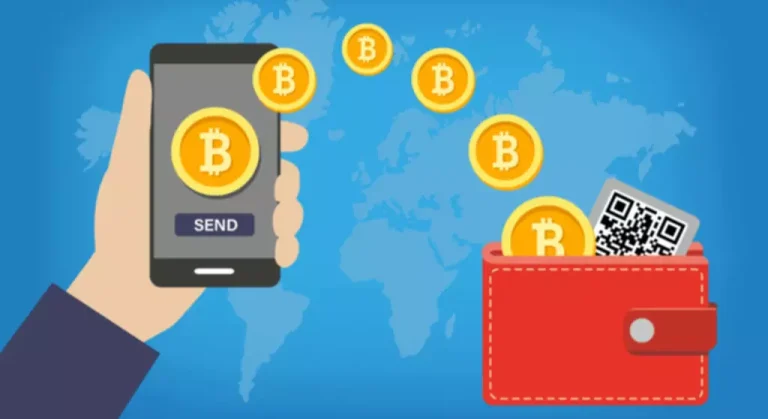Content
It hands them the tools to expand their reach while maintaining control of their creative output. The new business models that Ethereum allows (e.g., tokenization and crowdfunding) help shift the balance of power away from corporations and towards creators. Buying and trading can be conducted on an exchange like any other cryptocurrency. Users can choose to hold ETH on an exchange or in a self-custody wallet like the BitPay wallet. Ethereum is also responsible for the creation of non-fungible tokens (NFTs). The first implementation of this tech was a https://www.xcritical.com/ game called CryptoKitties in 2018.
Decentralized Autonomous Organizations (DAOs)
During peak times, ETH supply contracts as more ETH is burned, while lower demand leads to net-positive minting. This mechanism helps keep Ethereum’s supply more balanced and responsive to market conditions. In Ethereum’s PoS system, participants who want to help secure the network become validators rather than miners. To join as validators, participants must «stake» a minimum of 32 ETH—a commitment that acts as a deposit, signaling that they are trusted network members. When you transfer an ERC-20 token, the token Blockchain contract updates its internal ledger to decrease your balance and increase the recipient’s.

The 2024 Dencun Upgrade and Danksharding
The Bitcoin and Ethereum blockchains and networks are different concerning their overall aims. Bitcoin was created as an alternative to national currencies and thus aspires to be a medium of exchange and a store of value. Ethereum was intended as a platform to facilitate immutable, programmatic contracts and applications via a global virtual machine and to take a position as the infrastructure behind Web 3. So, any transaction or action happening blockchain vs ethereum on a Twitter-type application that has now been transformed will be a decentralized transaction. When Ethereum was launched, it utilized the same consensus mechanism of Bitcoin blockchain, proof-of-Work, to validate transactions.

Proof of Work vs. Proof of Stake
It runs parallel to the mainnet and focuses on accepting validators (or stakers) through a one-way deposit contract. Validators’ ETH is locked until the next phase, making it essential to understand that un-staking is only possible once shard chains are fully implemented. Ethereum’s future involves scaling through Layer 2 solutions, implementing full Danksharding, and introducing upgrades like account abstraction and proposer-builder separation (PBS). These enhancements aim to make Ethereum more scalable, secure, and user-friendly while reducing transaction costs and increasing throughput. Proto-Danksharding, introduced in March 2024, reduces the cost of storing data on Ethereum by implementing a new type of transaction called blob-carrying transactions. This upgrade makes Layer 2 rollups more efficient, lowering transaction fees and increasing scalability.
How Is Ethereum Different From Bitcoin?
- By late August 2022, Bitcoin’s market share had declined to 39.6%, but by June 2024, it had rebounded to more than 48%.
- Which is a better buy depends on your market outlook and investing preferences.
- This rollup-centric approach addresses Ethereum’s scalability issues by distributing the workload.
- The more nodes that run Ethereum software around the world, the more decentralized and resilient Ethereum can be as a public blockchain.
- For this reason it is almost impossible to attack the network, which in turn provides an enhanced customer experience of reliable and secure decentralised applications.
Learn more about blockchain and how it’s being used for business in this enterprise guide. PoS enables miners to mine based on which miners are willing to stake a certain number of ETH coins. For example, an application running on Ethereum requires resources to function. Developers use Ether tokens to fund an application and support it on the network. Our community is about connecting people through open and thoughtful conversations.
This means that blob data would be removed from actively stored data on nodes after one month, freeing up space and making storage demands more manageable. This process extracts value from other users and compromises network security and fairness. PBS aims to address MEV by introducing a more transparent and regulated approach. This burn mechanism has led many to describe ETH as a deflationary currency, but this is only partly accurate. Ethereum becomes deflationary only when the amount of ETH burned exceeds the amount minted, which occurs during periods of high demand when base fees spike. If demand drops, the rate of ETH burning slows, allowing the total supply to grow.
Today, Ethereum is much closer to embodying the structure of the Internet itself—a vast, interconnected network of networks, encompassing diverse assets, applications, and communities. Ethereum has grown to be more than just a blockchain; it is a platform that underpins the broader Web3 ecosystem, reflecting its continued expansion and profound influence on the digital world. With more blobs per block, Ethereum can handle even greater volumes of transactions off-chain, further reducing congestion and gas fees on the mainnet. EIP-7702, co-authored by Vitalik Buterin, proposes a new transaction type that allows Externally Owned Accounts (EOAs) to temporarily set a smart contract code executable only during the transaction.
Discover the key differences between fiat and commodity money, their advantages, limitations, and how they are used in global economies. In traditional contracts that require a third party, the use of a middle man can be expensive and time-consuming. Ethereum significantly reduces the cost and time of such contracts by eliminating the middleman.
To make this data easily accessible, blockchain explorers act like web browsers for the blockchain. As you use a search engine to find websites, a blockchain explorer lets you search and view on-chain data, including transaction details, account balances, and smart contract information. Once the block is proposed, other validators on the network verify its contents, ensuring that all transactions are legitimate and that the block conforms to Ethereum’s rules. When more than 2/3rd of the validators agree, the block is added to the chain, and the validator who proposed it is rewarded with transaction fees and newly minted Ether. Rather than using energy-intensive mining, Ethereum selects a validator at random to propose each new block.
You can create a decentralized application for which the participants of that particular application are the decision-making authority. Vitalik Buterin, a Canadian-Russian programmer, wanted to capitalize on the potential that Bitcoin’s peer-to-peer decentralized exchange delivered to the world. Since Bitcoin already allowed two users to exchange crypto without the need of a middleman, Vitalik wanted to extend blockchain technology to include peer-to-peer payment agreements or contracts. On September 15, 2022, the Ethereum merge occurred wherein the PoW mechanism was upgraded to PoS.
CFDs are complex instruments and come with a high risk of losing money rapidly due to leverage. You should consider whether you understand how this product works, and whether you can afford to take the high risk of losing your money. Of all the cryptocurrencies, ether currently seems most likely to take bitcoin’s place at the top of the pecking order.
EVM executes scripts worldwide across its network of distributed public nodes. These nodes provide the processing power for decentralized applications developers create to run on the network. Developers may buy Ether to pay for the use of the network, or they can mine for the tokens themselves, becoming a part of the network. An internal mechanism called Gas sets the pricing of transactions on the network. Miners produce Ether tokens that can be used as a currency and to pay for usage fees on the Ethereum network.
This also makes it harder for cybercriminals to enter the network as hash functions can’t be reverse-engineered; every time, it will generate a new one making it impossible for them to infiltrate. Although there are many platforms for application development, there is still no platform that can beat Ethereum’s public platform for app development. So, you see, the benefits of Ethereum decentralized platform are countless. The native cryptocurrency of Ethereum is called Ether (ETH), which secures the network, serves as a gas fee, and underpins the Ethereum financial system.
This eliminated energy-intensive mining, reducing energy consumption by approximately 99%. Ethereum’s ecosystem encompasses components that facilitate its functionality and growth. Key elements like the Ethereum Virtual Machine and other recent upgrades contribute to its adaptability and scalability. Speculators can invest in cryptocurrencies such as Ethereum directly, but they can also invest in the companies that may profit from a move toward digital currencies. But this compensation does not influence the information we publish, or the reviews that you see on this site. We do not include the universe of companies or financial offers that may be available to you.